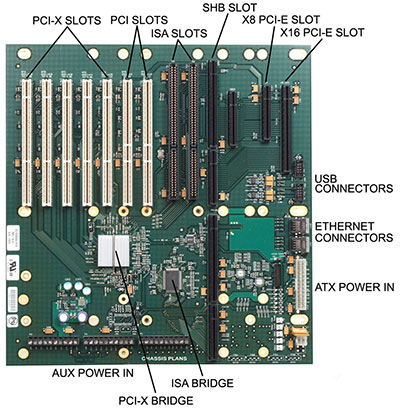In this article, we will look at the nominal voltage of batteries and what determines this factor.
Batteries are electrochemical devices used to power electrical circuits.
Each of these power sources has several electrical characteristics that determine its performance.
And a key element to consider is the nominal voltage. Here’s all you need to know about this property.
Contents
- What Is the Nominal Voltage of Batteries
- Why Use Nominal Voltage Ratings?
- Other Ratings
- What Determines A Battery’s Nominal Voltage?
- Nominal Voltage vs. Rated Voltage
- Nominal Voltage vs. Operating Voltage
- How To Determine A Circuit’s Voltage Requirements
- What About Shipping Limitations Based on Nominal Voltage?
- Wrap Up
What Is the Nominal Voltage of Batteries
A battery’s nominal voltage is the average voltage it outputs when fully charged.
So the actual voltage can be higher than the nominal voltage labeled on the battery. And the actual voltage lowers as the battery discharges.
So nominal voltage is more of a marketing term used to label the energy unit per charge in each battery. Let’s consider this car battery.
12V is the nominal voltage. Batteries usually consist of multiple cells connected in parallel or series inside.
Their connection determines the unit’s overall voltage output.
For instance, in a series connection, the volts per cell add up to determine the nominal voltage.
But in parallel connections, the nominal voltage equals the one of a single cell output.
Why Use Nominal Voltage Ratings?
Producing batteries with the same cell output voltage when fully charged is challenging.
Since they are all about chemistry, even battery cells emerging from the same production lines can have varying ratings.
So it is better to ignore the error margin and label the average voltage instead of indicating the actual voltage.
The variations also mean the maximum voltage in a car battery can be lower, such as 11.7V.
But the crucial thing is these variations should not be broad. And the application area (such as car electronics) should be able to function in this range.
It is vital to note that a battery’s voltage behavior changes under load, primarily due to internal resistance.
Low internal resistance reduces the voltage fluctuation under charge or device load. But high internal resistance increases it.

A technician measuring the internal resistance of secondary batteries (rechargeable batteries)
So batteries with low internal resistance have a lower error margin between the nominal and maximum battery voltage.
Temperature also affects battery voltage. Heat increases the voltage while cold conditions lower it.
So the actual voltage of a battery operating in a cold environment might be lower than the nominal voltage. And the opposite is true.
Other Ratings
The other vital number is Ah. This ampere-hour rating indicates the battery’s nominal capacity, showing the charge the battery cells can hold.
The value also shows the maximum discharge rate or the current the battery can supply per hour.

A 2.5Ah motorcycle battery
Batteries store energy in electrochemical form, and you can calculate this value using the nominal voltage and nominal capacity.
Electrochemical Energy (Watt hours) = Nominal Voltage (V) x Nominal Capacity (Ah)
Some manufacturers increase the nominal battery capacity to increase the watt-hours on paper, but the reality is different.
What Determines A Battery’s Nominal Voltage?
The battery technology or chemistry determines a battery’s nominal voltage.
So this average voltage varies depending on the unique active materials in the battery cells.
For instance, lead-acid batteries average about two volts per cell.
Nickel-cadmium and Nickel-metal-hydride batteries have lower nominal voltages (1.2V and 1.4V, respectively).

A charging adapter for nickel-cadmium and nickel-metal-hydride batteries
But Li-Ion battery cells have a higher nominal cell voltage (3.6V).
The materials are also light, making lithium-based batteries the most energy-dense type. But this topic is for another day.
Special Offer: Get $100 off your order!
Email [email protected] to get started!
Nominal Voltage vs. Rated Voltage
While nominal voltage is the average, rated voltage gives a safe operating range a device can run in.
So when designing an electrical device to run using battery power, consider this power source’s maximum and nominal voltage levels.
The upper limit of the range should be equal to or slightly higher than the maximum voltage.
And the nominal voltage should be somewhere in the middle. As batteries discharge, they go toward their minimum voltage.
Let’s use the car battery example. It can go as low as 10.5V when discharged and 12.6V when the engine is off.
But when the engine is running, the voltage can rise to 14.5V.

A lithium-ion battery in a charging and discharging state
So when designing electronic car components, such as the ECU, ensure their rated voltage range is about 10-15V.
Nominal Voltage vs. Operating Voltage
The operating voltage closely links with the rated voltage because it defines the voltage at which the equipment or circuit functions.
You can also describe the operating voltage as the actual voltage on the equipment terminal from the battery.
So the operating voltage of a device lies within the rated voltage range.
If this applied voltage is higher or lower than the limits of rated voltage, it will affect the equipment’s performance.
How To Determine A Circuit’s Voltage Requirements
If unsure about the battery to install to power your circuit, you can calculate the voltage using the formula V=IR.
Use an adjustable power supply and current meter (multimeter) to determine the highest and lowest system voltage.
Once you have these figures, you can determine the best battery nominal voltage.
For instance, if the product’s voltage rating is 10-15V, the best nominal voltage would be within the range.
You can build this battery using four lithium-ion cells in series (3.6 x 4 = 14.4V). Alternatively, you can use either of the following.
- Six or seven lead-acid cells series pack (12.6-14.7V)
- 10-12 nickel cadmium cells (12-14.4V)
- 9-10 nickel metal hydride cells (12.6-14V)

A lead-acid car battery
Also, check the battery chemistry capacity, self-discharge during storage or transit, usage cycle, discharge rate, and stability.
Other factors to consider are the size and weight of these cells. Can the battery enclosure accommodate the cells?
And does the product need to have a compact, lightweight battery?
Generally, Li-Ion cells have the lightest and most compact battery chemistry but are expensive.
What About Shipping Limitations Based on Nominal Voltage?
If you recall, a battery’s chemistry determines its nominal voltage. Generally, most batteries have stable chemistries.
But the high-capacity lithium-ion battery types are unstable and can explode or cause fires when in transit.
If you’re familiar with electric cars, you must have heard about the numerous fire incidents caused by these batteries. But the battery pack in these cars is relatively small.
So picture transporting a shipment as large as a container full of lithium batteries.

Lithium-ion cells in a car battery
There are safety measures to ensure the product gets to its destination in one piece.
- First, you must have a UN 38.3 certification for the batteries
- Secondly, you must handle/pack the shipment correctly
- Thirdly, the battery SOC should be less than 30%
Other measures include the following.
- No transportation in passenger aircraft
- The number of grams of lithium in the battery determines the number of cells to ship at once
Wrap Up
In conclusion, the nominal voltage of a battery is a critical factor to consider when powering electrical circuits.
But it is not the only factor to consider. Batteries have multiple electrical characteristics, and nominal voltage is just one piece of the puzzle.
We hope this article has been insightful. Reach out if you need further guidance about this average voltage and other factors to check before buying a battery.
Special Offer: Get $100 off your order!
Email [email protected] to get started!






